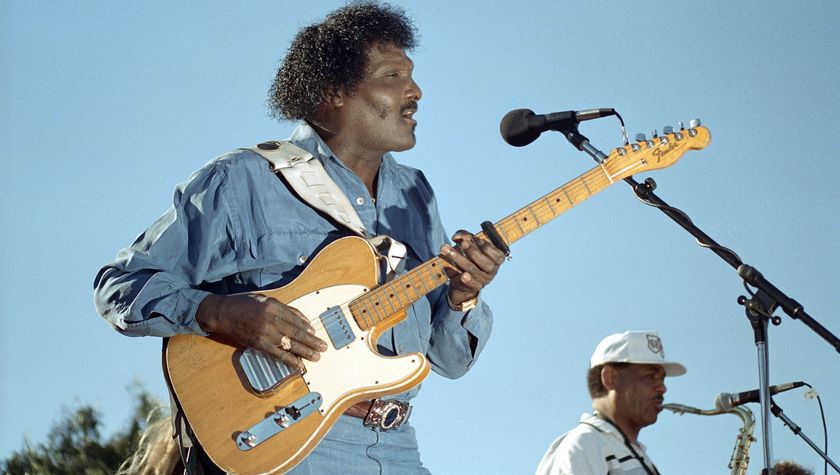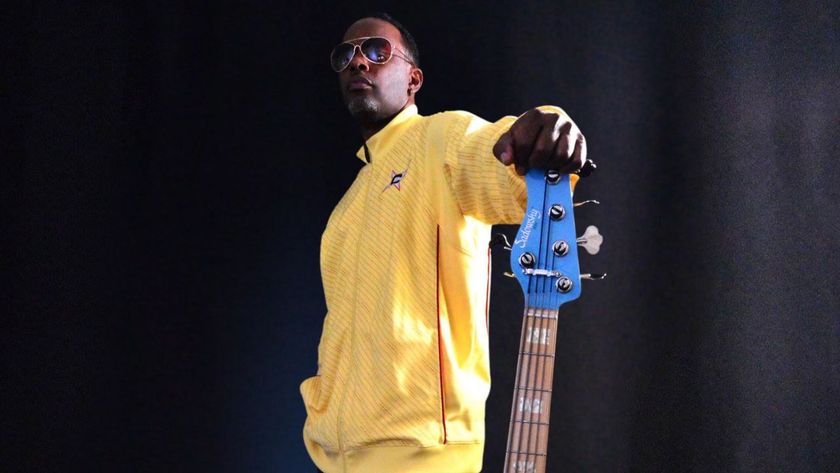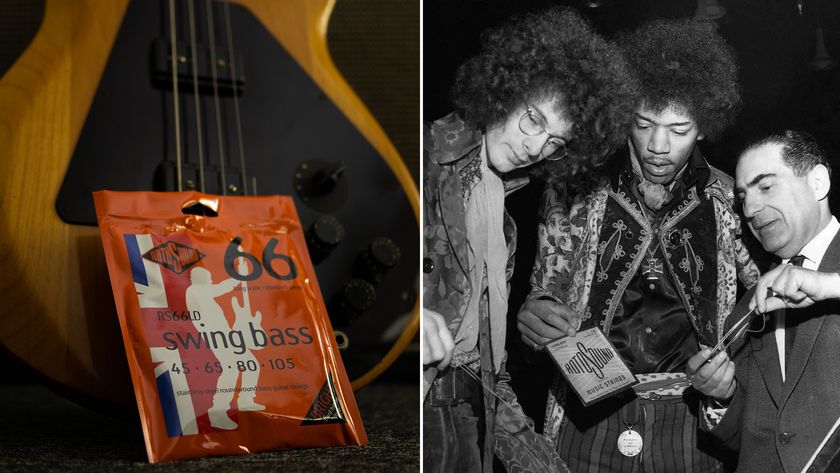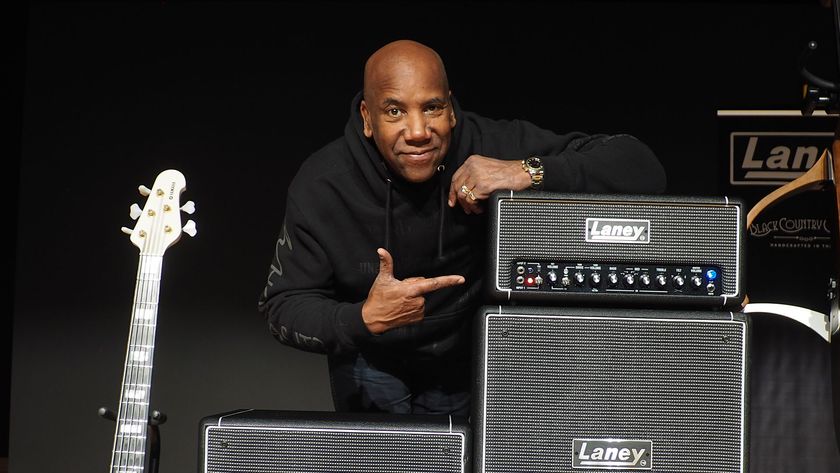“I got food poisoning. When I’d stopped throwing up, the first thing we did was the solo for Love In An Elevator”: Joe Perry on the unlikely origins of Aerosmith’s greatest guitar moments – and the big regret of his 600-strong guitar collection
With the Peace Out Tour bringing the curtain down on America's greatest rock 'n' roll band, Joe Perry joins us to take us back to the start for a career-spanning interview
Many fans feel that Rocks, the follow-up to Toys In The Attic, is Aerosmith’s finest hour. Again, it features a ton of classic tracks and great guitar work from you and Brad. Can you remember writing the riff for Back In The Saddle and why you chose to play a six-string bass on that song?
“Oh yeah. When I saw the Spinal Tap movie, that scene where they had three bass players, I had to laugh. But I also remember seeing a band with two bass players – maybe it was Peter Green with Fleetwood Mac, during one of their jams, when he would put down his Les Paul and pick up a six-string bass.
“I remember thinking it would be cool to have that in our little corner of the woods, so I tracked one down and wrote that Back In The Saddle riff with it. Very often, you buy a guitar not just because it looks great or sounds great, like a ’68 Les Paul, but because there’s just something about it that makes you work a little harder to play it, and through that, you might have a new song.”

And that’s how it was with Back In The Saddle?
“It was. I’ve collected a lot of cool guitars over the years, and they inspire me to do something I might not have done otherwise. And with that guitar, you can get a lot of great sounds because it’s basically a bass, but it’s got two extra high strings, so you can play chords on it. But it’s the kind of instrument that’s not going to work for everything, so when we played it live, we tried to do it without it, but it didn’t work. So, Brad plays the solos live, and I use the six-string bass. It all works out.”
Another killer track on Rocks is Last Child, a Brad composition.
“Brad wrote some of my favourite songs in our catalogue, and he played some of my favourite solos. His style is so different to mine, but if you listen enough to our stuff, you can tell the difference between Brad’s sound and mine.”
Get The Pick Newsletter
All the latest guitar news, interviews, lessons, reviews, deals and more, direct to your inbox!
That’s an important point, as Brad should be considered Aerosmith’s co-lead guitarist. You interchange so well and, in many ways, created a template many bands have followed.
“The two biggest influences on this band, at least from my point of view, are The Yardbirds and early Fleetwood Mac. They both had two guitar players, and I always thought, ‘What would they do?’ And, of course, it’s always fun to start that way, but you end up finding out that you don’t sound like them – you sound like Aerosmith, you know? But you gotta start somewhere…”
Flying solo
Aerosmith had continued success in the late ’70s with the albums Draw The Line and the in-concert double Live! Bootleg. There were huge tours with headlining shows in stadiums. But in 1979, during the recording of the Night In The Ruts album, you quit the band and formed a new outfit, The Joe Perry Project. At that point, did you overhaul your cache of guitars?
“There’s a lot of guitars that are associated with me, like that red 10-string B.C. Rich Bich, which I’m holding up in the air on the Live! Bootleg record. I didn’t play it that much with Aerosmith, maybe a few times for a couple of songs, but I used it a lot on my first Project album [1980’s Let the Music Do The Talking]. It’s funny – for the relatively few times I played it, I got a lot of recognition for that guitar.”
And you weren’t much of a collector then anyway, right?
“That’s true. I really wasn’t into collecting guitars. At that point, I had a few Les Pauls, a few Juniors or Strats, but that was it. Honestly, the guitar I miss the most from that era is the Strat I recorded Walk This Way with, which went the way of the wind when I left the band. But right around then, I wanted to clear the decks and clear my head. I took most of my Aerosmith guitars, put them in road boxes, and left them there.”
Aside from the red Rich Bich, what other guitars were critical to your early ’80s work outside of Aerosmith?
“I started playing a left-handed Strat, my main guitar, while I was away from the band. But I did bring out the clear-body Dan Armstrong and the Rich Bich. I recorded the first couple of Project albums with an Ampeg V, like the 50-watt kind. I wanted something close to a Marshall, and that was pretty much it.
“I didn’t get into collecting amps until the late ’80s or early ’90s. Brad turned me onto this guy on the West Coast, who lived in San Diego and had a house full of great old Marshalls and combos. That’s when I started collecting old amps.”
You rejoined Aerosmith in 1984 and have stayed put ever since, but you’ve made a number of solo albums. Do you have a favourite?
“Well, some of them – I think I’ve got seven or eight of them now – I just needed to do. I felt like I had to get a record out. When I listen to some of them I kind of cringe. But there’s one with a couple of tunes I really loved.
“The red one [2005’s self-titled Joe Perry] hit the mark. So for some of the solo records, I listen to one or two songs and go, ‘Man, I just wasn’t in the right space for that.’ But the red album has the song Mercy that got nominated for a Grammy. So that’s probably my second favourite solo album after the first one with Project.”
The Resurrection
When the band reunited in 1984 were you confident you could get back to the top?
“I don’t know, man. When I look back at it, we were lucky to have one shot. I’ve seen so many bands come and, for whatever reason, they’re gone. But when we got back together that summer in ’84, we had to buy ourselves out of our deal with Columbia – we were in debt for $300,000. They said they’d laid out so much money, and blah blah blah, so we had to buy our way out of the record deal before we could even sign with another label.”
And nobody wanted to touch the band anyway, right?
“Yeah, nobody wanted to sign us at that point. We’d burned too many bridges. So, we went out on the Back In The Saddle Tour, and the fans were there for us. We went out without a record company or an album. We had nothing, man, just the fans. And we had to see if we could get over the old bullsh*t and work together as a band again.
“The fans were there for us, and by the end of that summer we found that we could make it through a tour without killing each other! We buried a lot of hatchets in the ground instead of each other’s heads! I’ve always said that if we had our wits about us – which was hard because we were so burned out from seven years of album, tour, album, tour, album, tour – we would have just taken a break or a vacation.
“We would have taken a few years off. We didn’t have to tour so much, but we did and we burned out. And in those four years that we were apart, by the time we came back to the band it was a whole different scene.”
Current page: The Six-String Bass & Other Delights
Prev Page Things get weird with Get Your Wings Next Page Walk This Way and the MTV EraAndrew Daly is an iced-coffee-addicted, oddball Telecaster-playing, alfredo pasta-loving journalist from Long Island, NY, who, in addition to being a contributing writer for Guitar World, scribes for Bass Player, Guitar Player, Guitarist, and MusicRadar. Andrew has interviewed favorites like Ace Frehley, Johnny Marr, Vito Bratta, Bruce Kulick, Joe Perry, Brad Whitford, Tom Morello, Rich Robinson, and Paul Stanley, while his all-time favorite (rhythm player), Keith Richards, continues to elude him.
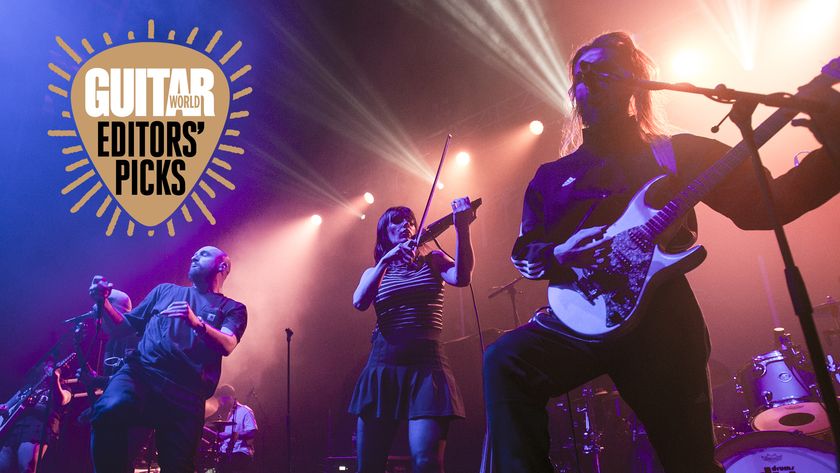
“If any song can unite all generations of rock guitar fans, this is it”: March 2025 Guitar World Editors' Picks
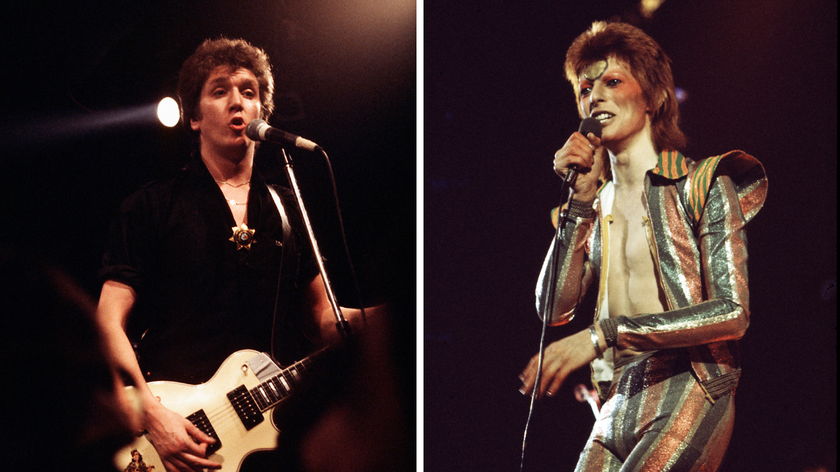
“I nicked some cymbals, the bass player’s amp head and some microphones. I got Bowie’s microphone with his lipstick on it!” On July 3, 1973, David Bowie retired Ziggy Stardust – that same day, Steve Jones stole his equipment







